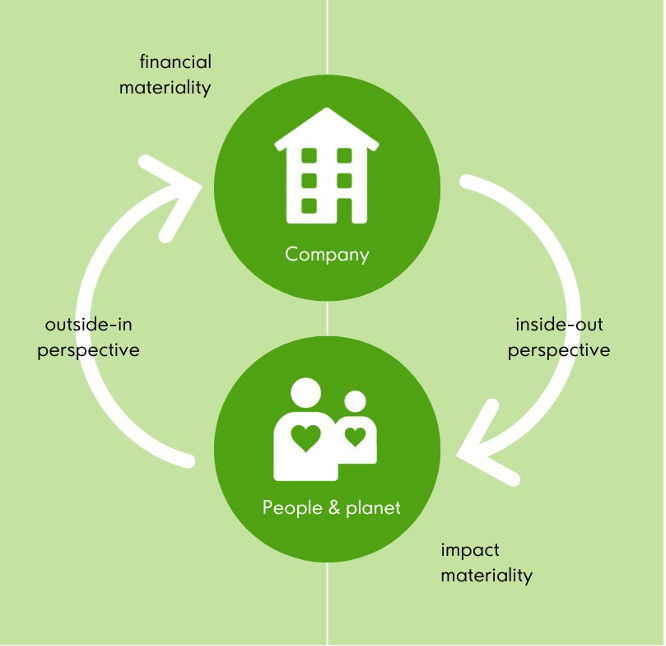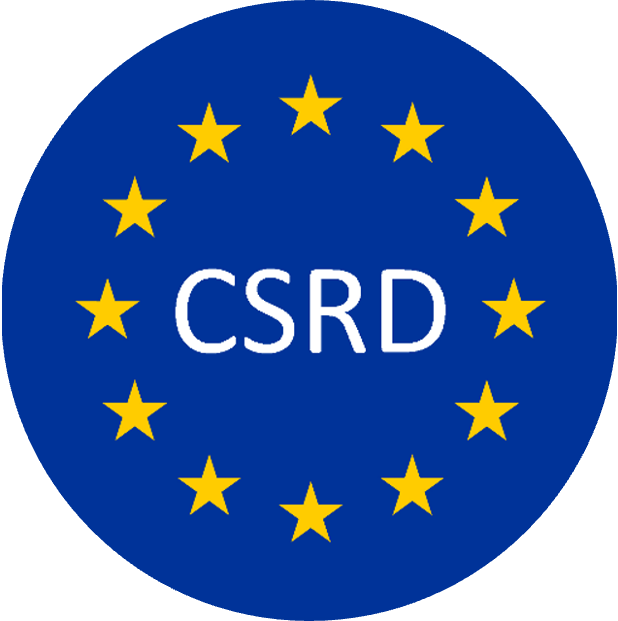ESG advisory services
Double materiality assessments
Know the material ESG impacts and risks in your business and be ready for CSRD
Expert guidance to complete your double materiality assessment
If your business falls within the scope of CSRD, then a double materiality assessment (DMA) is mandatory. For all other businesses it is still an essential tool to calculate your financial risks and your impact on others.
Conducting a DMA for the first time can be challenging. CSRD requires assessment across multiple ESG topics in your business operations and your value chain.
Our experts take a step by step approach to guide you through the most efficient approach for your business. We identify what matters most to your business, marrying those topics to CSRD disclosure requirements, to achieve compliance quickly and effectively.

Conducting your double materiality assessment
Working hand in hand with your team, we take a 5 step approach to understanding your business ESG context, mapping your impacts, risks and opportunities, and defining your materiality for CSRD reporting:
1. Your context
Defining your current operations, external value chain and stakeholders in ESG context, plus setting financial and materiality thresholds.
2. IRO
Setting company specific topics through Impact, Risk & Opportunities assessment, aligned with CSRD.
3. Materiality
Scoring IRO assessments, applying thresholds and determining materiality.
4. Disclosure
Documenting impacts, risks & opportunities against specified material topics, for approval and submission.
5. Next time
Formalising a standard operating procedure to enable subsequent DMA analyses in-house.
Benefit from Double Materiality Assessment support
Our experts guide you every step of the way, so you get it right first time, to comply with ESRS and CSRD demands accurately and efficiently.
Save time, leveraging our expertise and experience
A right first time approach will optimise your compliance process
Collaborative approach engages all stakeholders and builds momentum
Identify prioritised business impacts and risks for mitigation and action
Established methodology for improve financial performance
Establish a process for future in-house assessment and disclosure

How do we help you?
- In a series of workshops, we follow our 5 step process, working closely with your teams, engaging all stakeholders and your external 3rd party value chain as required.
- Draft reports are produced defining materiality, with impact and financial ratings, with stakeholder follow-up meeting to discuss outcomes.
- Final reports document quantified and prioritised key impacts, risks and opportunities, all signed off by you.
- We leave you with a fully documented standard operating procedure to conduct your own double materiality assessments going forward, without the need for external help if preferred.

Ask us about support for your double materiality assessment
If you think you need help implementing double materiality assessments, get in touch on the form here, and we’ll get straight back to you to see how we can help:
Your ESG team
Ikano Insight’s team of expert sustainability consultants will guide your business through all aspects of sustainability strategy, from data management to GHG calculations, framework reporting to legislative audits and compliance, and software implementation to business performance improvement.
Our team are there to help you every step of the way, as little or as much as you need, on your sustainability journey.
Head of Sustainability
Peter Jones
peter.jones@insight.ikano
Snr Sustainability Business Analyst
Innes Christison
innes.christison@insight.ikano
Sustainability Business Analyst
Emily Blenkley
emily.blenkley@insight.ikano
Peter Jones
Head of Sustainability
Innes Christison
Snr Sustainability Business Analyst
Emily Blenkley
Sustainability Business Analyst
Frequently asked questions
What is double materiality?
Double materiality refers to an advanced approach to ESG materiality that considers two key perspectives:
- Financial materiality: How environmental, social, and governance issues impact a company’s financial performance and risk profile.
- Impact materiality: How a company’s activities affect the environment, society, and broader stakeholder groups.
Unlike traditional materiality assessments, which focus primarily on the financial implications of ESG risks, double materiality incorporates both the financial perspective and the external impacts of a business’s operations.
This dual-lens approach ensures companies not only comply with regulations but also strategically align their operations with sustainability goals, investor expectations, and broader stakeholder concerns.
Why are double materiality assessments important?
As part of the CSRD and the European Sustainability Reporting Standards (ESRS), large companies and listed small and medium-sized enterprises (SMEs) are now required to conduct double materiality assessments (DMAs) to provide a comprehensive picture of their ESG performance.
The CSRD mandates companies to evaluate both financial materiality (how ESG factors affect the business) and impact materiality (how the business affects the environment and society). This expands the scope of ESG reporting and drives a more holistic understanding of corporate sustainability.
What is the best way to approach a double materiality assessment?
While many consultancies adopt a “CSRD-aligned DMA” methodology, where they start by simply following CSRD topics and assessing their materiality, Ikano Insight takes a more strategic and streamlined approach. This unique methodology ensures businesses focus on the key ESG issues that are most relevant to their strategy and industry, saving time and resources.
Read our DMA article here to see the detail of this approach.
What are the business benefits of a double materiality assessment?
Enhanced decision-making
Double materiality assessments provide businesses with a comprehensive understanding of both the risks and opportunities they face. By addressing both financial and impact materiality, businesses are better equipped to:
- Identify emerging ESG risks, such as those related to climate change or social unrest.
- Seize opportunities for innovation and sustainability-driven growth.
- Align business strategy with sustainability goals, ensuring long-term profitability and resilience.
Regulatory compliance and readiness
Conducting a DMA in alignment with CSRD requirements ensures businesses are well-prepared for audits and regulatory reporting. Ikano Insight’s method ensures that companies are not only compliant but also focused on relevant issues, reducing the time and resources spent on irrelevant disclosures.
Strengthened corporate reputation
By transparently addressing their environmental and social impacts, businesses can improve their credibility and build trust with stakeholders. Proactively identifying and reporting on material ESG issues positions a company as a leader in sustainability, reducing the risk of accusations of greenwashing.
Support for long-term sustainability goals
A well-conducted double materiality assessment supports long-term goals such as carbon footprint reduction, sustainable supply chain management, and responsible corporate governance. By focusing on material issues, companies can implement strategies that truly drive positive social and environmental change.
What are main challenges in conducting double materiality assessments?
- Data availability and quality
One of the main challenges businesses face when conducting a DMA is the availability and quality of ESG data. We typically address this by leveraging advanced ESG analytics tools like IBM Envizi to gather reliable data and ensure accuracy in reporting.
- Stakeholder engagement complexity
Engaging a diverse range of stakeholders can be challenging. To overcome this, we would use effective engagement strategies and consulting services to ensure that all voices are heard and that the materiality assessment is comprehensive.
- Inconsistent methodologies
The lack of standardised methodologies can lead to inconsistencies in double materiality assessments. Our approach adheres to established frameworks like GRI, SASB, and TCFD, ensuring that the assessment is methodologically sound and globally recognised.
Ask us about setting up your fact-based sustainability workshop
If you need to drive results from your sustainability strategy, get in touch on the form here, and we’ll get straight back to you to explain more:
Related products

ESRS gap analysis
Ensure CSRD compliance and drive business benefit from your ESG reporting
Sustainability strategy advisory service
Build the right sustainability strategy for your business, be fully compliant, and become a better business
ESG process & technology scoping
Map data, hierarchies and processes to define your reporting needs and technology required

Let’s chat!
If you’d like to chat with us to see how we can help you achieve your sustainability goals, including measurement, reporting and compliance, just pick a time that suits you in Peter’s calendar.
Review your sustainability objectives, challenges and see which tools or services would match your needs.
Get in touch
Let’s chat!
If you’d like to chat with us to see how we can help you achieve your sustainability goals, including measurement, reporting and compliance, just pick a time that suits you in Peter’s calendar.
Review your sustainability objectives, challenges and see which tools or services would match your needs.






